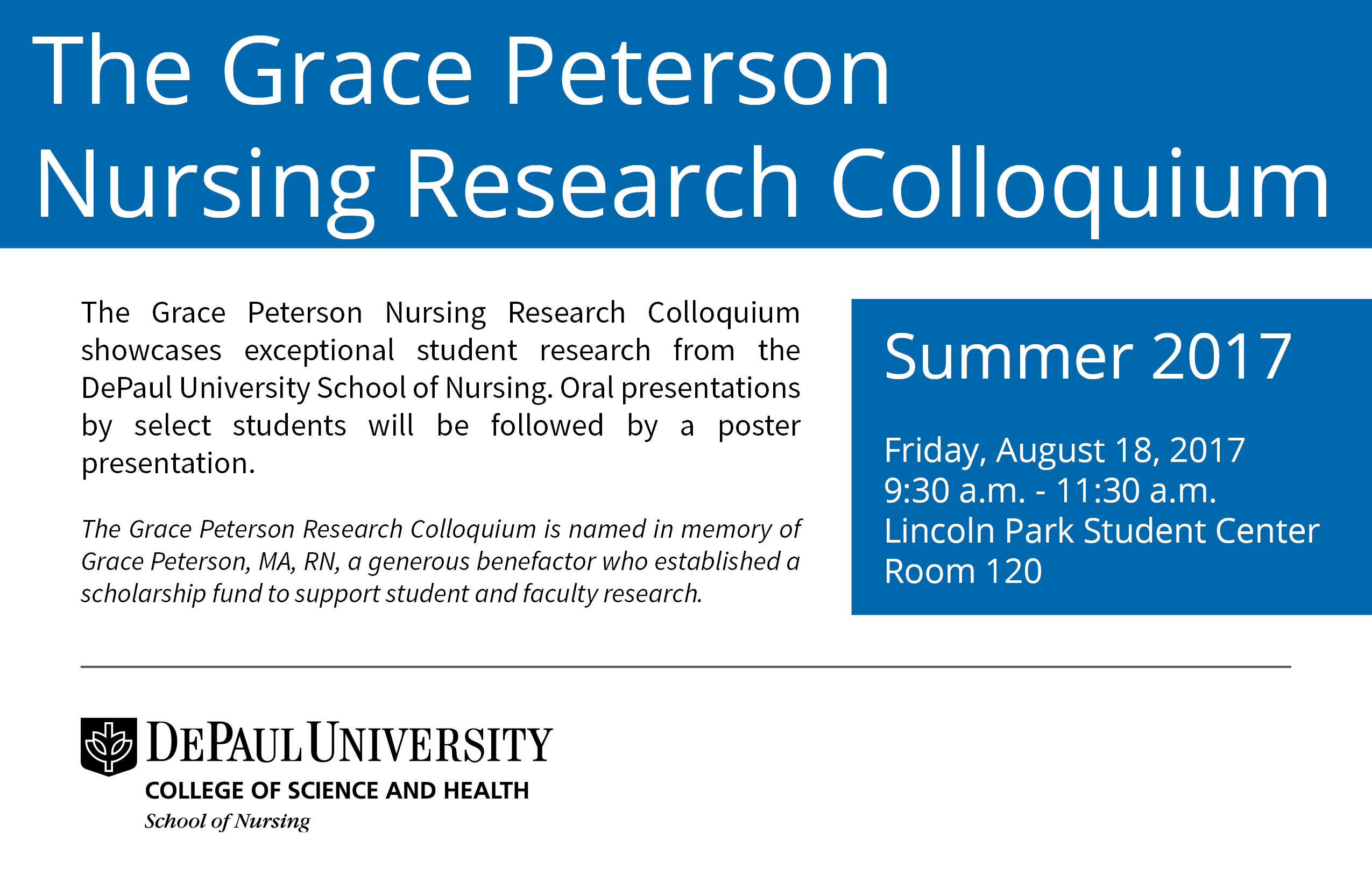Title of Research
Start Date
18-8-2017 10:00 AM
End Date
18-8-2017 11:30 AM
Abstract
Napping and Errors in Night Shift Nursing
Yoon-Hee Hong, MS Candidate
Larry Maturin, MSN, APN, ACNS-BC, CEN, CCRN
DePaul University School of Nursing
Summer 2017
Abstract
Fatigue and sleepiness in nurses resulting from long 12-hour night work shifts were brought to the spotlight by a sentinel event alert published by The Joint Commission in 2011. By working these long hours, nurses place patient safety at risk. Napping mid-shift has been proposed as a means of reducing the physiological demands and mental decline of fatigue and sleepiness. However, implementation of napping and other fatigue relief measures by nurse managers has not been widely implemented. This integrative review provides further information on the benefits of mid-shift napping on fatigue and sleepiness and the influence of naps on error reduction during night work. An integrated literature review of eleven articles was conducted in the method outlined by Whittemore and Knafl (2005), with key terms ‘napping,’ ‘night shift,’ ‘safety,’ ‘error,’ ‘nurse,’ and ‘nap’. Analysis revealed napping during the night shift increased speed of reaction times on psychomotor vigilance tasks. Baseline alertness declined over time and parasympathetic activity was less stable in participants who did not take mid-shift naps. Naps during night shift increase speed of response times, promote mental flexibility, and decrease subjective sleepiness, but naps must be appropriately timed and of the correct duration to have the intended effects. Despite the many benefits, napping may not be a universal strategy for all nurses because of individual variability.
Keywords: nurses, napping, night shift, errors, patient safety
Included in
Napping and Errors in Night Shift Nursing
Napping and Errors in Night Shift Nursing
Yoon-Hee Hong, MS Candidate
Larry Maturin, MSN, APN, ACNS-BC, CEN, CCRN
DePaul University School of Nursing
Summer 2017
Abstract
Fatigue and sleepiness in nurses resulting from long 12-hour night work shifts were brought to the spotlight by a sentinel event alert published by The Joint Commission in 2011. By working these long hours, nurses place patient safety at risk. Napping mid-shift has been proposed as a means of reducing the physiological demands and mental decline of fatigue and sleepiness. However, implementation of napping and other fatigue relief measures by nurse managers has not been widely implemented. This integrative review provides further information on the benefits of mid-shift napping on fatigue and sleepiness and the influence of naps on error reduction during night work. An integrated literature review of eleven articles was conducted in the method outlined by Whittemore and Knafl (2005), with key terms ‘napping,’ ‘night shift,’ ‘safety,’ ‘error,’ ‘nurse,’ and ‘nap’. Analysis revealed napping during the night shift increased speed of reaction times on psychomotor vigilance tasks. Baseline alertness declined over time and parasympathetic activity was less stable in participants who did not take mid-shift naps. Naps during night shift increase speed of response times, promote mental flexibility, and decrease subjective sleepiness, but naps must be appropriately timed and of the correct duration to have the intended effects. Despite the many benefits, napping may not be a universal strategy for all nurses because of individual variability.
Keywords: nurses, napping, night shift, errors, patient safety


